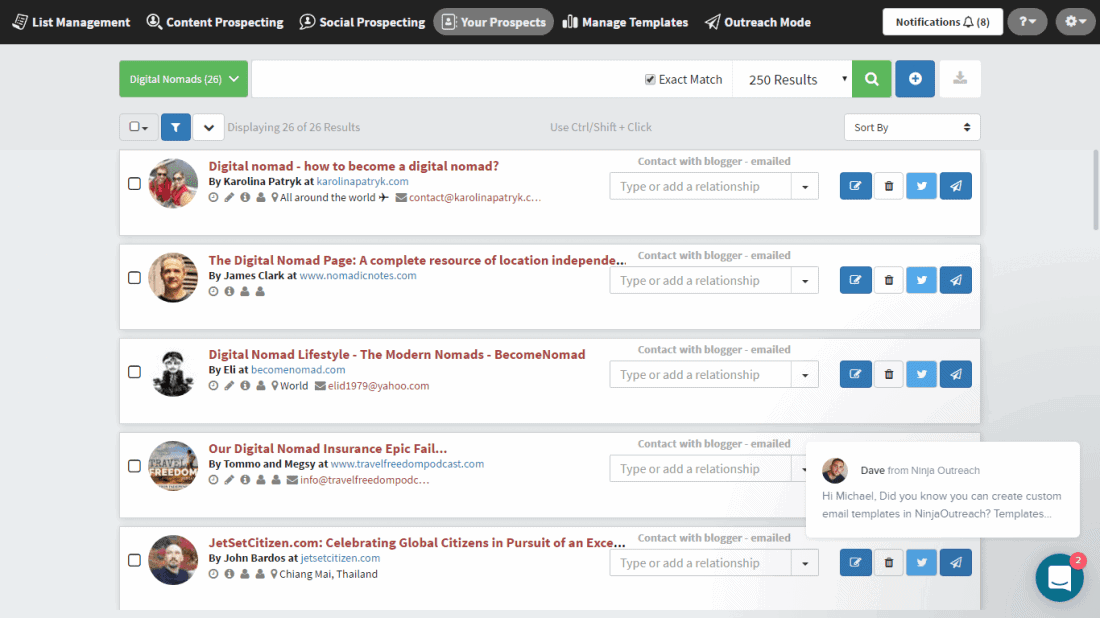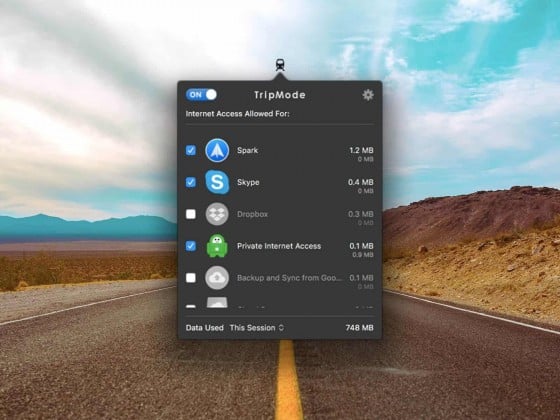

Learning how to become an affiliate marketer is a great way to monetize your blog, once your it begins to increase Google Search rank for money-making keywords. In this guide, we outline 15 easy-to-follow affiliate marketing steps.
Scroll to the end of this how to affiliate marketing guide to view our How to Start an Affiliate Site in 15 Steps infographic.
After 14 months of affiliate marketing on this blog and others, we started making enough income to support our travel with the best affiliate marketing programs for beginners, such as Safetywing, PureVPN, AWin, Shareasale, FlexOffers, and others. Within our first 6 months we were already making $1k USD per month, and it grew from there pretty quickly.
This is how we did it.
Before You Learn How to Start Affiliate Marketing:
If you haven’t started your blog yet, check out What Should I Blog About? (How to Qualify a Blog Idea). It’s a must-read if you’re still figuring out what niche you’d like to serve as you learn how to start affiliate marketing.
If you have qualified your idea, let us show you how to start a blog with WordPress.
Related: The Top Blogging Tools We Use For THIS Blog

Affiliate Marketing for Bloggers
Affiliate marketing for bloggers is sort of like a marriage –you’re going to be staring at it and working with it for a long time before it becomes successful, and for a long time after. Don’t choose a niche you’re not willing and ready to become an “information expert” in.
Think You Might Sell Your Affiliate Site?
As you learn how to become an affiliate marketer with your blog, always keep in mind that you might sell it one day. Keep accounts, hosting, social media profiles and everything associated to it clean and organised so one day you might be able to hand the keys to a prospective buyer with minimal work.
Below we’ll outline some of our top search optimisation tips to help you be successful when after your learn how to start affiliate marketing on your blog.
How to Become an Affiliate Marketer in 15 Steps; a Checklist
1. Choose a Very, Very Specific Niche
Bloggers who didn’t do enough research learning how to become an affiliate marketer will often start off with a broad niche thinking they can earn more commissions by promoting a wide set of products. Some might also aim for an affiliate niche that’s already dominated by big brands like cheap travel deals or health products.
Our advice? Don’t go for niches that already have a high amount of competition; instead, aim for ones with low competition. That may mean lower traffic –but it also means less competition, faster ranking on Google, and as a result, more commissions! In other words, reach for the low hanging fruit.
A keyword that gets a lot of traffic is worthless if none of that traffic is going to come to your website. Measuring competition with a keyword tool is everything.
Consider using a tool like Keysearch to determine how high or low the competition is for the niche/keyword group you are going for. It’s incredibly cheap, it’s quite effective, and it provides much more insight than Google’s Keyword Tool for Adsense.
The screenshot below illustrates competition for the term “affiliate marketing for bloggers”. As you can see, it’s pretty helpful.
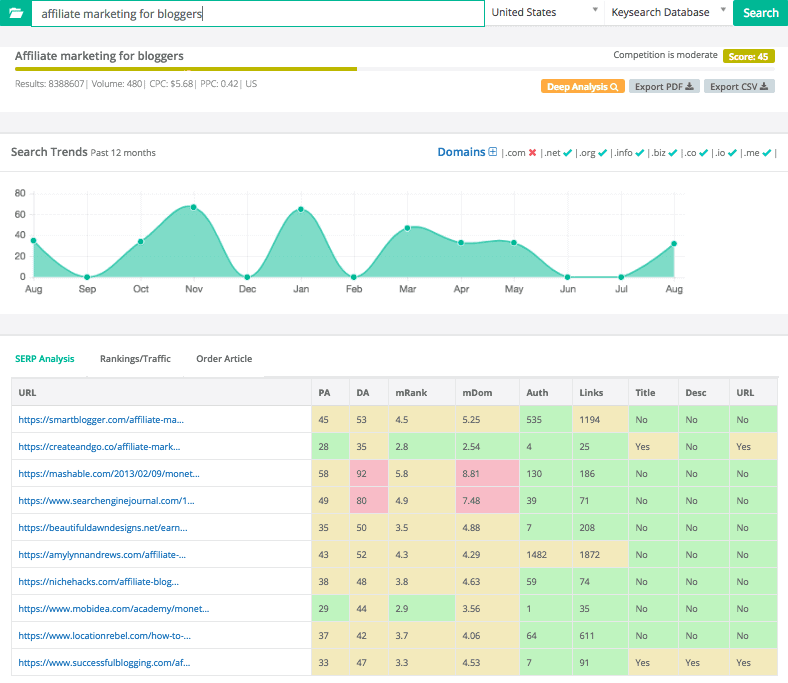
The best strategy is to find keywords that are ranking for blogs that have a similar domain authority to your own so it’s easier to get on page one of search results.
Even if there’s only a couple hundred searches for your desired keywords every month, if you’re on page one you’re likely to capture a majority of that traffic.
Our Keyword Placement Guide is an absolute must read if you’re serious about making money with a blog.
Start with a small, targeted niche and be very selective in the products you promote as to not spread your keyword pool too thin. Affiliate marketing for bloggers can earn enough money to travel forever by promoting the right products and services.
Niche down: Instead of a broad term like travel deals, you might want to combine it with one specific challenge travelers face and work from there.
Some ideas may include must-have travel items for a specific location, gender, traveling with a specific chronic illness (like diabetes), or traveling with children.
For example: Instead of “cheap resorts” (which is high competition and vague), consider “cheap resorts in Bali for single people”, “Bali packing list for diabetics”, or “cheap resorts in Bali with kids”, “solo female travel tips for Bali”. I’m just spit balling here, but you get the idea.
2. Use Websites like Amazon Associates, eBay, and Clickbank to Research Which Products to Promote
When figuring out how to start affiliate marketing on your blog in the early stages, it’s important to start qualifying ideas and researching which products sell well. Be careful when picking products you want to promote on your affiliate website. They must have a moderate amount of search traffic while having a reasonable commission rate.
Visit a website that sells products and look at the top sellers. These are the items you want to focus on first, as a beginner.
After all, the money you make after you start affiliate marketing on your blog is proportional to the specific utility of products you promote. Some signals to help you determine the “saleability” of a product are the reviews, number of purchases, and how specific of a problem they solve.
For example, if someone is searching for an underrepresented solution, such as “traveling with eczema” –you can pretty much guarantee they’re going to be ready to pull out their wallet, and there won’t be a lot of competition. Using Amazon and eBay are great to learn more about the saleability of a very niche product.
3. Get Keyword Ideas and Quality Links from Your Top Competitors
Learning how to do keyword research is an important part of being an affiliate marketer. To get started, do a quick Google search and look for top blogs that belong in the same niche as you.
If your niche is about health supplement reviews, type in the keywords “health supplement reviews blogs”, “supplement review blogs” and other variations in the search bar. Write down the top 20 blogs that show up on Google.
Now open Keysearch and type in the URLs one at a time under the “Competitive Analysis” tab.
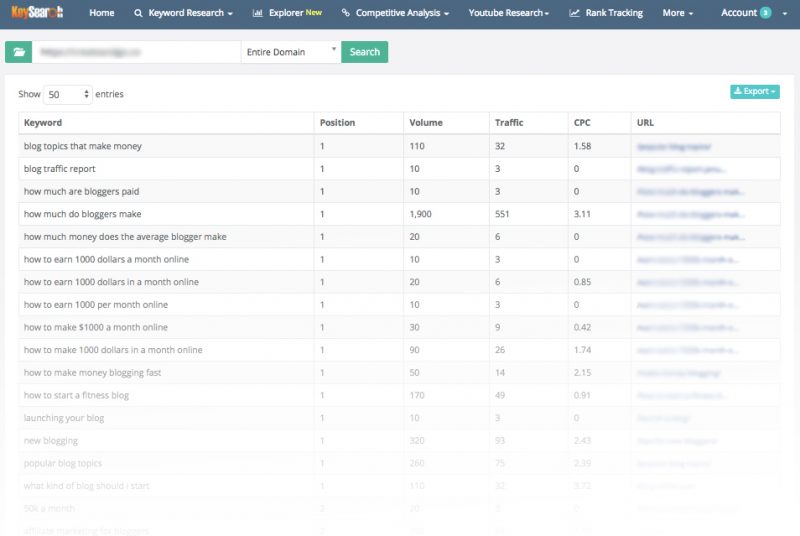
This tool allows you to see what keywords your competitors might be using and makes affiliate marketing for bloggers incredibly easy.
From there, you can write your own keyword list and pick variations that might be useful to your affiliate site. Pick variations! There’s no point in trying to compete with a major player on keywords unless your doing an ad campaign.
Another thing you can take from your competitors are their links. With Keysearch, take a look at your competitor’s backlink profile and take note of their quality links. You can approach these sites to offer them a guest post on a relevant topic in your industry.
You can also learn which content on their website is worthy of a backlink before you start affiliate marketing on your blog to ensure your content sings right out of the gate.
4. Use Informational and Commercial Intent Keywords Together
Example of an informational keyword: “What is Vitamin B12?” –Likely won’t make a sale with this one.
Example of a commercial intent keyword: “best Vitamin B12 supplements for women” –More likely to make a sale with this keyword.
Informational keywords cater to people who want to learn more about a product before buying it while commercial intent keywords are for those who are ready to buy your product. You will want to use these two types of keywords throughout your content.

Before you start writing affiliate marketing articles, we suggest you read our keyword placement guide.
5. Insert Keywords Naturally into Your Content
These are some best practices for keyword usage when you start affiliate marketing for bloggers;
- Include keywords in the title tag, header tags, and meta description
- Avoid stuffing keywords and only use them whenever necessary
- Use the appropriate keywords for every image’s filename and alt tag; avoid using underscores, spaces, or capital letters as these can lead to crawling issues
- Google put the most emphasis on the first link of a page as its anchor text so be sure to pick the most important keyword to use as an internal link
6. Your Brand Really Matters
Our next point in this how to become an affiliate marketer guide is to treat your blog like a big brand. Big brands don’t only use relevant keywords, they also use their brand name when optimizing for search. This sets them apart from the crowd.
Like, Nike shoes vs Basketball shoes. People search for brands, and a brand name gives you a unique angle. Do a search for “Hobo with a Laptop” to see what I mean.
Be sure to create a unique online presence for your brand. Your site will rank better for the niche keywords you are using once more people begin to Google your brand name, and they give you a leg up over competitors who used exact-match keywords in their website name, like “best-travel-supplements.com” (which Google doesn’t treat as kindly as it does branded URLs).
7. Build Links Correctly
Look for reputable high-quality websites within your niche and leave an insightful comment or ask to write a guest post.
This will help send traffic to your site so it ranks in search engines. You can also submit a press release to various press release directories which will often provide you with a dofollow backlink.
Ignore cheap, automated links; search engines like Google and Bing are good at ignoring such and if you do get caught, you may just get penalized. Always work on building good quality links and avoid cheap, spammy links.
To simplify the process of blogger outreach and link building we use Ninja Outreach. The amount of time saved and email subscription gained more than justifies the cost.
8. ‘Nofollow’ All outgoing Affiliate Links to Avoid Google Penalties
This has been a heated debate among SEO webmasters with some of them saying it’s unnecessary to do a ‘nofollow’ on affiliate links while others warn against it.
If you are consistently posting quality content alongside affiliate links, you don’t have to worry about getting penalized. However, if Google detects your site as spammy with little to no value to human readers, you may get penalized.
This is why it is recommended to place a ‘nofollow’ on affiliate links. Google’s own Matt Cutts encourages this, saying they “handle” a vast majority of affiliate links. So even if you do post quality content, you might as well update your affiliate links to be ‘nofollow’ if you want to be as safe as you can be from penalties.
Google uses their own affiliate links in search results pages, too. You’re their competitor. Don’t give them a reason to shove you to the bottom of search results.
On the flip side of the coin, ‘dofollow’ your blogger friends who spend time contributing to your success after you build your own affiliate website. WordPress dofollows links in posts by default, so no action required.
How to ‘NoFollow’ a Link:
- Hop into the Text editor in WordPress, as opposed to the Visual editor
- Find your link, and add rel=”nofollow” to it, like this: <a href=”http://affiliatesite/affiliate-id” rel=”nofollow”>buy product</a>
9. Write Unique and Helpful Content
Passing Copyscape’s standards is not enough. You have to satisfy your reader’s need for compelling content as they will be the ones who will purchase your product.
Aside from fulfilling Google’s standards, you also need to satisfy your reader’s need to learn more about the product you are promoting. An affiliate site that’s made to be a valuable and entertaining resource for your readers is the best safeguard against current and future search engine algorithms.

10. Be Unbiased When Writing About a Product
You don’t want to hard sell your readers, surely you respect them more than that. Always be unbiased when writing a review about the product you’re promoting. If you’re excited about something, great. A little passion is alright, but don’t gloss over the ugly parts.
Write about the upsides and don’t forget to include the downsides too, if there are any. Your readers are more likely to trust you and purchase the product with proper expectations set.
11. Include a Call-to-Action (CTA)
A call-to-action should drive your user to do something on your site whether it’s to buy a product, book a hotel, sign up for your email newsletter, or download a content asset.
The call-to-action will depend on what your niche is and what page the user is on. Avoid using more than one per page. Each page on your website should be geared towards one thing that you want your reader to act on.
If you have more than one CTA’s on a page, accept that you may be decreasing your chances of conversion. So if you do, make one stand out above the rest.
12. Create Social Media Profiles for Your Website
Figuring out how to start affiliate marketing is not just about the content you create on your own website; social signals can influence your site’s ranking and give you the exposure you need. The least it will do is provide a temporary spike to your site’s rankings which can help you secure permanent rankings later.
To start using social media for affiliate marketing, create a Twitter, or Facebook page for your blog. Instagram is great for the travel niche, and Pinterest is another search engine that’s great for beginners to tap because Google takes so darn long.
Be sure to only pick social media platforms that fit your niche, and don’t spread yourself too thin. Then use tools like Buffer or Hootsuite to schedule posts for the entire week.
Make it a point to update your profile every time you publish a new post or find content online that’s relevant to your site. Jetpack’s Publicize functionality can do this for you, we use it to automagically share our content when we hit the Publish button (and it’s free).
Don’t forget to optimize your site for social sharing. Add share buttons in your post to make it easy for people to share your content across their network.
DO NOT put outbound social media links to your profiles in highly visible areas! You’ll notice we don’t put our social links in our headers or navigation, they’re tucked at the end of an article in the author bio. This is because you work hard to GET traffic –why encourage people to LEAVE right away?
Pro-tip: Revive Old Post is a great free plugin to have your website auto-tweet your posts on a WordPress website at a specified pace. Premium options allow for several social profiles.

13. Build Your Email List
When you build your own affiliate website, your list is everything. It’s a lot easier to capture your reader’s email address when it’s in exchange for something valuable (free trial, free eBook, free video tutorial, etc).
Most users will not buy the first time they visit your website but by turning them into a warmer lead, you can maintain contact with them and continue to promote your content and products. After a few emails, you’ve got another chance to make a conversion.
We know there’s a ton of options out there, but we like to use Ninja Popups (no connection to Ninja Outreach, the 2010’s just loved them some ninjas).
Email Autoresponder That Allows Affiliate Links
It’s important to know for certain if your email list automation tool allows affiliate link use.
We’ve used cheap/free email automation tools before and found that many of them do not allow affiliate link usage. In one case, Mailchimp locked an account just for suspecting affiliate link use in an email on a free account.
Convertkit is an autoresponder that allows affiliate links and it meets all our needs for each of our affiliate websites.

14. Improve Page Speed and Website Loading Times
Site speed is often overlooked when it comes to affiliate marketing for bloggers. Keyword usage in your copy and image “alt text” in addition to link building are major factors in terms of SEO, but so is how quickly your affiliate site loads.
Ideally, your WordPress blog will load in 2 seconds or less.
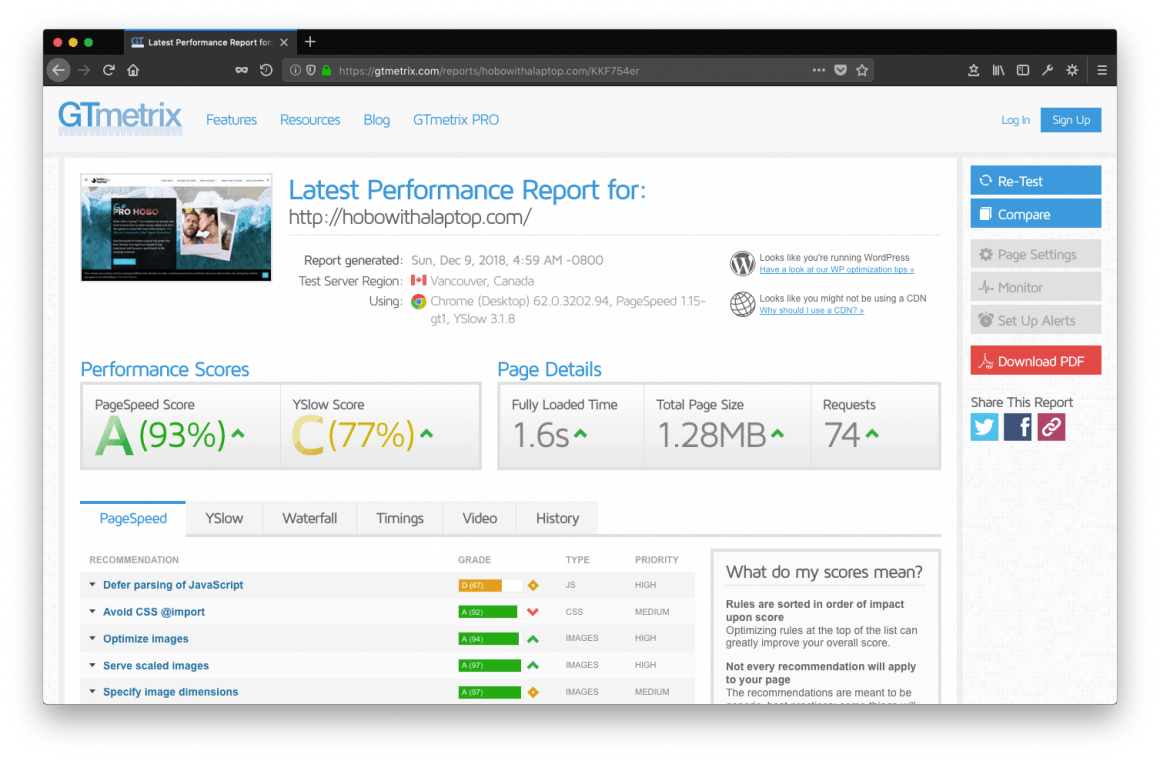
We use ShortPixel to shrink our images and it’s improved our search rankings dramatically. Page loading time is a massive priority –not only for Google Search optimization, but also for visitors who tend to click away when a page takes too long to load. Stop putting off faster website loading times, it’s hurting your wallet. Check out ShortPixel.
15. Get Paid From the Best Affiliate Programs in One Place
Why did you learn how to start affiliate marketing? Money. And when you sign up with affiliate programs from all around the world, you’re going to dodge a lot of annoying fees by skipping PayPal and using a bank account that’s directly inside the country that you’re being paid in. In fact, many of the best affiliate programs won’t be willing to pay you via PayPal at all.
So what do you do?
You open a bank account inside the country that the affiliate program is paying you in.
For instance, joining only Amazon.com’s Associates (affiliate) program is leaving money on the table –they have one for a bunch of different countries. When a UK visitor clicks on a US Amazon link, you don’t make a red cent because they’ll likely switch to the UK store to complete the purchase.

So, join the UK Associates program, too. Or Canada, as the screenshot above suggests. Join the ones in the countries that Google Analytics says the majority of your website visitors are from.
Of course, then you’ll need a bank account in the UK (or Canada, etc.) unless you want to wait for checks in the mail (f*ck that).
To solve this checks-in-the-mail nonsense (because that’s soooo analog), join Payoneer and they’ll give you your own unique bank account in a range of different countries (even Japan!). Multiple bank accounts from around the globe, one log in.
Get paid through the account numbers they provide and then withdrawal to your local bank account you have inside your home country. But do it before you go nomad. It’s a pain in the ass doing it after you’ve left your home country.
Or request a free bank card for each from Payoneer. Yup, they have cards, too. No home bank account required.
It’s called the Global Banking Service. Check it out and get $25 USD for free after you cash in $1,000 USD just for clicking our referral link (we get a free $25, too). They used to pay that $25 USD after cashing in $100 USD but I think their awesome service gave them a wee too much success and they beefed up the bar to get your free money. But the service is great –and even though we endorse Transferwise often, we still use Payoneer for our top affiliate offer payouts.
Payoneer is great for Awin, Amazon, and even poopy gig economy sites like TextMaster.
Pro Tip: Automagically regionalize your Amazon affiliate links with a WordPress plugin like Woboq Amazon Affiliate Link Globalizer. Simply enter all your Amazon Associates IDs and it will automatically append them to links and direct visitors to the store in the country they’re in. It’s an old plugin, but it still works and will help you get paid no matter where your website visitors come from.
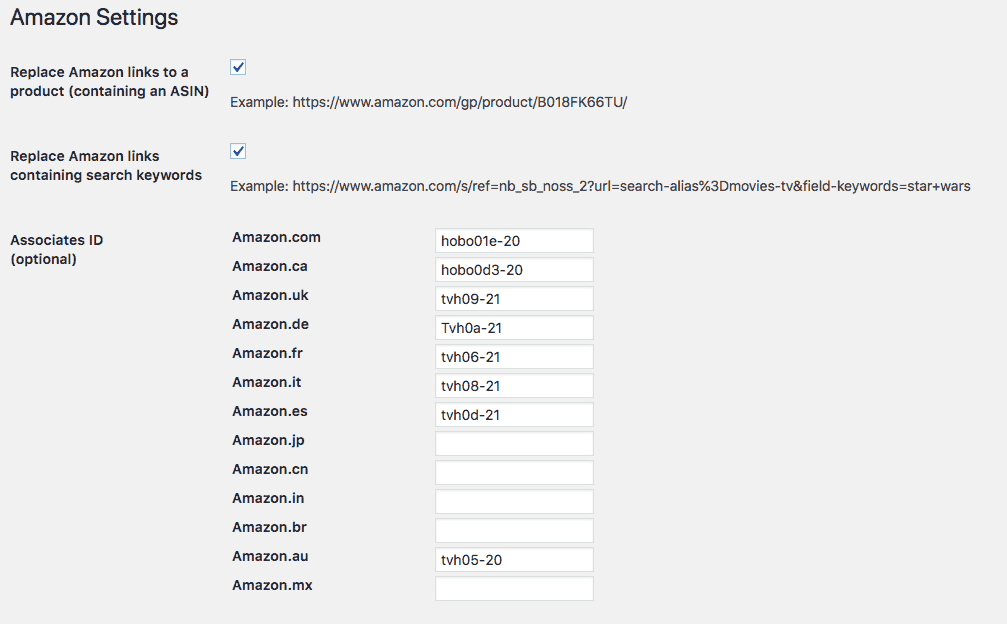
If you found the information in this affiliate marketing for bloggers post useful, please share this How to Start Affiliate Marketing post or embed the infographic further below into one of your own posts if you think we’re worth it.
When it comes to learning how to start affiliate marketing, patience is the name of the game.
Getting traffic after you build your website and learn how to start affiliate marketing takes time, so putting in the extra effort and doing the tasks above will help you reap longer-lasting, reliable results that rival other forms of search engine marketing, like PPC.
If you found this affiliate marketing how-to guide useful, give us some love in the comments. If you think we missed something, let us know.


Check Out Our Free Blogging Course!
If you found this post helpful, check out the rest of our free blogging course.
You’ll learn how to start a blog from scratch, make passive income –and much, much more!
Learn BloggingIf you just hit the ‘scroll down’ button at the top of this ‘how to start affiliate marketing on your blog’ beginner’s guide to jump right to the infographic below, you’re missing out, big time. Scroll back up and find out for yourself?
Click here to scroll back up.





